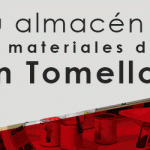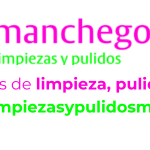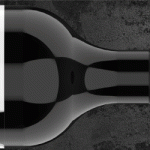






The Provincial Palace served as the setting this afternoon for the presentstion of the “Electrocardiography Manual of the General University Hospital of Ciudad Reala work prepared by the Cardiology service of the aforementioned health center that has seen the light thanks to the intervention of the Provincial Council through its Printing Service, from which a total of 1,700 copies have come out. The event, which was well attended of public, has been chaired by the president of the Ciudad Real Provincial Council, Michelangelo Valverde mencherowho During his speech, he alluded to the close relationship that exists between the provincial institution and the health sector.
Valverde has recalled this strong bond saying that The Provincial Council has played a fundamental role in health care throughout its history, since he has collaborated in the management of hospitals that, at the time, were provincial and that are now transferred to the Health Service of Castilla-La Mancha (SESCAM). “There are still some doctors and health personnel who belong to the staff of the Provincial Council of Ciudad Real”, has pointed out after specifying that the relationship has always been “close and committed.”
He has indicated that the book is aimed at “people prepared to assist, to help, to take care of us and to treat us.” He added that behind the formation of a medical professional there is a lot of workor staff“I know it, I know him well, a lot dedication and also a lot of sacrifice.” Therefore, Valverde understands that any tool that comes to handThe scope of healthcare professionals It is a good not only for they but for all of us, “because “You are the ones who have to take care of us and treat us in the best possible way.”

It has also valued the editorial function of the Provincial Council, which through its YoThe provincial printing press has allowed the publication of numerous works, both in the literary and scientific fields, such as the Electrocardiography Manual. presented today with the participation of the mayor of Ciudad Real, Francisco Cañizares; the president of the College of Physicians, María Concepción Villafáñez; Ignacio Sánchez Pérez, head of the GAI Cardiology Service of Ciudad Real and Manuel Rayo, FEA of cardiology at the GAI. The cardiologists Felipe Higuera Sobrino and Javier Jiménez Díaz have been the editors of the work and there has also been the collaboration of resident doctors.
At another point in his speech, the president of the Provincial Council has invited those present to learn more about the Provincial Palace, a building that celebrates its 130th anniversary this year. has stood out its historical and architectural relevance.

During the event, which also included with the presence of the vice president first of the Deputation, Milagros Calahorra, the spokesperson for the ggovernment of the provincial institution, Rocío Zarco, and the councilor Yolanda Torres, Valverde has taken advantage the occasion to thank medical professionals for their effort and dedication. And he has not hesitated to demonstrate the worth of the electrocardiogram in medical diagnosis, even at a popular level. “Even people on the street, when they feel some discomfort in their chest, recommend having an electrocardiogram, which shows its importance,” has commented with a close tone.
Finally, the president has reaffirmed the commitment of the Provincial Council to the health field and to future collaborations with the College of Physicians between other entities, remembering that the provincial institution always support public interest initiatives. “We collaborate with practically all the entities in the province, many times without having the powers, but always willing to contribute”, he said before closing the event with an invitation to attendees to tour the Provincial Palace “and learn up close the history of an institution that has been at the service of citizens for more than a century.”

On the other hand, the mayor of Ciudad Real, Francisco Cañizares, has made reference to the pride of the city for being a benchmark in the health field thanks to the General University Hospital and the Faculty of Medicine. “As a layman in the field, the only thing I can tell you is that Ciudad Real feels very proud to be a reference, thanks to our hospital and our Faculty of Medicine, in a topic that represents a quantitative leap for any capital worth its salt,” said Cañizares during the presentation of the andlectrocardiography.
He has also mentioned, the importance of having a Faculty of Medicina and a hospital of the magnitude of the General Universitario, describing them as essential milestones in the development of the city and the province. Besides, The aforementioned health center has been highlighted as the largest company in the city, “no “It only generates employment, but it also has a valuable group of health professionals committed to the well-being of the neighbors.”

Cañizares hto done emphasis on the advances in cardiology in recent years, highlighting the increase in survival from pathologies that, until recently, were considered fatal. In this context, has praised the work of the professionals who have contributed to the manual, revealing the relevance of the electrocardiogram as a key tool in the diagnosis and treatment of diseases coronary. “With a device and a simple technique, which has been in our lives for more than 100 years, they manage to diagnose and treat diseases of extraordinary severity,” has pointed.
The mayor of the capital has shown his gratitude to the professionals who have participated in the preparation of the manual, recognizing their efforts to transmit knowledge and improve service to citizens. “Since the TOCity Council of Ciudad Real we can only thank you for your daily work and for having taken the trouble to prepare this manual, which will undoubtedly improve the service healthcare provided to the neighbors,” ha saying.

Manuel Rayo (Specialist Physician in the Cardiology Area of the GAI of Ciudad Real) began the interventions of the event by noting that “if the medical profession had to have any obligation, it would be to be continuously trained, to give our patients the best care and the best possible treatment, in each of the circumstances.” He has also highlighted the validity of a “complementary test that is centuries old.”
Subsequently, the president of the College of Physicians, María Concepción Villafáñez, who has expressed his gratitude to the Cardiology Service of Ciudad Real, which has been the author of this publication through its residents and “it is appreciated that they use the research and publications part to serve other colleagues, to be able to help them to better understand this field and that will have a secondary impact on patient service and the medical care that we can offer.”

Villafáñez highlighted the great teamwork of the Cardiology Service and “the great personal work behind it.” Likewise, he thanked the Provincial Council for its work in printing and publishing the book, “which has provided all the facilities to carry it out, through an excellent relationship of collaboration, since in the end it is a service to the citizens.” And finally, he thanked the medical service that has acted as a common thread to unite the professionals who have made it possible.
On the other hand, Ignacio Sánchez, head of the Cardiology Service of the GAI of Ciudad Real (SESCAM) highlighted that electrocardiography is a very old technique, with more than one hundred years, invented in Holland and developed in the Mexican school “is a fundamental tool in diagnosis for any specialty, but you have to know it, because it is widely used in acute pathology.”

Finally, he has intervened on behalf of the editor Felipe Higueras, and on his own behalf, Javier Jiménez Díaz, both cardiologists of the GAI of Ciudad Real, to explain that The idea of the manual arose a few years ago to “help residents who joined the province’s hospitals with one of the most used diagnostic tests, but which is sometimes one of the least known, and it was proposed that it be done by residents for residents” and that manual is a success, which has been improved in this second edition. He ended by saying that the electrocardiogram is a perfect test “that continues to be of interest, because it provides diagnostic and prognostic information, very economical, and with the advantage that the patient does not have to be harmed.”

132 users have seen this news